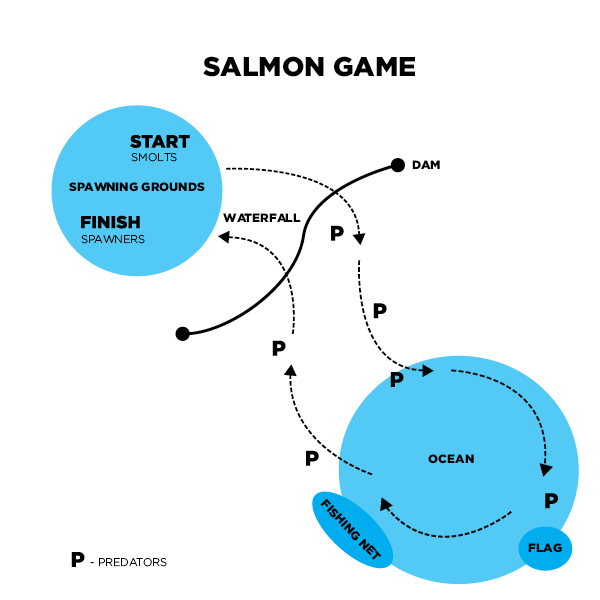In this game, students will act out the salmon life cycle from fry to spawners. They have to survive in the wild!
Salmon start their lives as eggs, hidden in gravel at the bottom of fast flowing water. They grow up in this spawning ground area as alevin (eating their egg sac) and fry (eating insects.) Seasonally, they are triggered to move beyond their spawning ground. At the stage of smolts, their bodies undergo a large physiological transformation, allowing them to move through their creek, through the river systems, and finally reaching the estuaries that lead them to the ocean. They live in the ocean for the majority of their lives where they develop into adult salmon. Finally, when the time is right, their bodies undergo another large physiological transformation allowing them to travel from the saltwater ocean to the freshwater creek where they were born. They will lay their eggs and milt back in the exact same spot where they grew up for the beginning of their life.
Their migration follows a great distance, amazing abilities to find their home, and incredible amounts of threats along the way. Humans play a large role in the threats to salmon. Most of the salmon die along the way and do not make it back to spawn, but those that make it back lay thousands of eggs to continue the cycle of life for another generation.
This obstacle course is not very easy to migrate through and is therefore representative of an actual salmon migration course in which most of the salmon die along the way, while only a couple make it back to spawn. This game has been adapted from a Salmonids in the Classroom activity.


 copy.jpg)